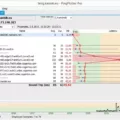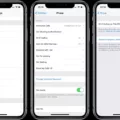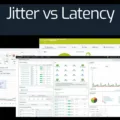The Internet Control Message Protocol (ICMP) is an integral part of the Internet Protocol (IP) suite, used for communication between hosts and gateways on a network. It is primarily used to provide feedback about the state of the network, check for errors, and provide information about other components in the network. In this blog post, we’ll take a look at what ICMP is and how it works.
At its core, ICMP is a connectionless protocol – meaning that there does not need to be any prior connection established between two nodes before they can send messages to each other. This makes it useful for relaying information quickly without having to wait for a connection to be established. In addition, because it is not associated with any particular transport layers protocol like TCP or UDP, it can be used by network administrators as a tool to troubleshoot network issues more quickly.
One of the primary uses of ICMP is known as Ping – which stands for Packet InterNet Groper – and is essentially an automated way of testing whether or not two computers are connected to a network. When two devices wish to ‘ping’ each other, they will send an ICMP Echo request message which contains some data that will then be echoed back when received at the other end. This allows both sides to know whether or not their connection was successful and also gives them some insight into how fast their connection was made. If either side does not receive the expected response within a certain amount of time then this can indicate that something has gone wrong with either the sending or receiving node’s network configuration or hardware.
In addition to ping requests, ICMP also includes several other message types such as Destination Unreachable messages (which are sent when data cannot be sent due to an error), Time Exceeded messages (which let routers know how long they should wait before discarding packets), Parameter Problem messages (which are sent when parameters in packets are incorrect), Source Quench messages (which instruct routers to slow down data transmission if traffic is too heavy), Redirect messages (which tell routers which paths data should travel on) and so on. All of these message types help keep networks running smoothly by providing detailed feedback regarding network conditions and allowing administrators to quickly troubleshoot problems without having to manually investigate them first.
ICMP provides an important service in helping keep networks running smoothly by allowing devices on different parts of a network to communicate with each other without needing prior connections established between them. Its various message types help provide detailed feedback about different aspects of a network and allow administrators to quickly identify and fix any issues that might occur.
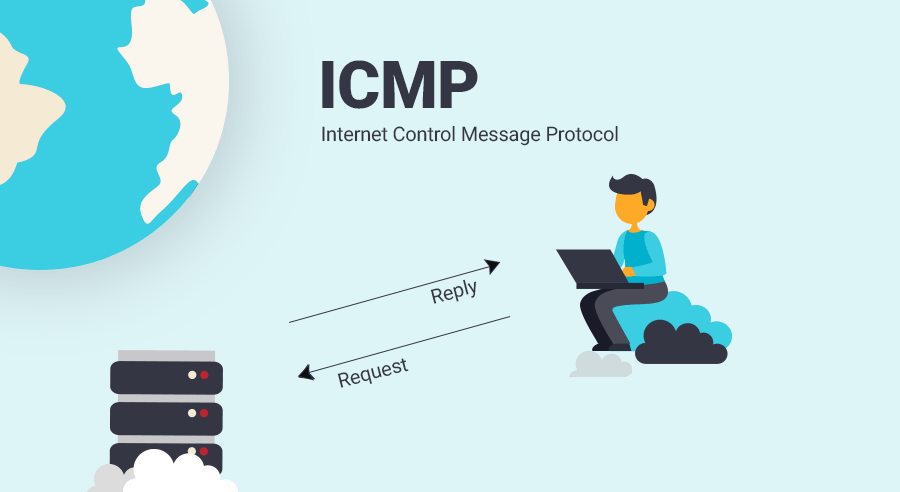
The Use of ICMP
An ICMP (Internet Control Message Protocol) is an important part of the Internet protocol suite used for network communications. It is used primarily for error reporting, network troubleshooting, and sending informational messages. For example, when a ping request is sent from one computer to another, it is the ICMP protocol that handles the exchange of data packets between them. When a destination host receives a packet that can’t be processed due to an error, the ICMP protocol will send back an error message to the source host. This allows network administrators to quickly identify and resolve any errors or problems in the network. Additionally, ICMP is also used for more advanced operations such as route tracing and path discovery.
The Purpose of ICMP Ping
Internet Control Message Protocol (ICMP) Ping is a network tool that is used to check the availability of a host or device on an internet protocol (IP) network. It works by sending an ICMP “echo request” packet to the target host and waiting for an ICMP “echo response” reply. These packets are typically small, only 8 bytes long, and contain no data other than a unique identifier and sequence number. When the target host receives the request, it responds with another ICMP packet containing the same identifier and sequence number as those in the original packet. This allows the originating host to measure the round-trip time of a network connection and confirm that it is active. Additionally, ICMP ping can be used to troubleshoot network issues, such as determining whether there is congestion or packet loss on a route.
Is ICMP a TCP or UDP Protocol?
No, ICMP is not a TCP or UDP protocol. ICMP stands for Internet Control Message Protocol, and it’s a network layer protocol that is used for network management and troubleshooting. Unlike TCP and UDP, which are both transport layer protocols, ICMP does not require any sort of connection to be established between two devices before sending messages. Instead, it relies on a connectionless model where devices can send messages to one another without first establishing a connection. This makes ICMP an important tool in diagnosing network problems and managing network traffic.
The Relationship Between ICMP and Ping
No, ICMP does not just ping. ICMP stands for Internet Control Message Protocol and it is used for a variety of different tasks, such as providing feedback about network conditions between two points or relaying error messages. The most well-known of these tasks is the ping command, which sends an ICMP echo request to another computer in order to determine the latency between them. However, there are many other types of ICMP messages that are necessary for the proper functioning of IP networks, such as destination unreachable messages and redirects. So while ping is a subset of ICMP, it is only one part of a much larger protocol that serves many purposes.
Differences Between ICMP and TCP
The main difference between ICMP and TCP is the way in which data is transferred. ICMP (Internet Control Message Protocol) is a simple message-based protocol that is used to provide feedback on the status of network connections. It sends error messages when there are problems, such as when a packet can’t reach its destination, or when there are problems with routers or other devices on the network. ICMP messages are short in length, typically no more than 64 bytes.
TCP (Transmission Control Protocol) is a connection-oriented protocol that allows for the reliable transmission of data over a network. It creates a connection between two computers and then splits messages into packets so they can be sent over the internet one at a time. When all of the packets arrive at their destination, they are reassembled back into the original message. TCP also has built-in mechanisms for ensuring reliability, such as retransmitting lost packets and sequencing packets so they arrive in order.
Can Hackers Utilize ICMP?
Yes, hackers can use ICMP for malicious purposes. ICMP is a Network Layer protocol that runs over IP and enables hackers to map out networks, launch distributed denial-of-service (DDoS) attacks, and exploit vulnerabilities. With the right tools, a hacker can use ICMP to gain access to other machines on the network by sending malicious ICMP packets or by exploiting vulnerable systems with buffer overflow attacks. While these security risks are concerning, they can be mitigated by restricting access to ICMP traffic through firewalls and network configurations.
What is ICMP and What Does it Do?
ICMP (Internet Control Message Protocol) is a protocol that network devices use to provide feedback when an IP packet fails to reach its destination. It helps keep the internet running smoothly by providing information about errors, such as when a packet isn’t able to reach its destination due to congestion or other network issues. When ICMP receives an error message, it is able to generate its own messages in order to inform other devices on the network of the issue. This helps keep the internet from becoming overloaded with traffic and ensures that information is transmitted quickly and accurately. In short, ICMP helps make sure that your data gets from point A to point B without any problems.
Does ICMP Utilize DNS?
No, ICMP does not use DNS. ICMP is a protocol used to test the reachability of a host on an Internet Protocol (IP) network. It works by sending an Echo Request packet to the target host and waiting for an Echo Reply. As part of this process, ICMP does not use DNS to resolve hostnames into IP addresses – instead, it directly uses the IP address of the target host. In other words, ICMP does not rely on DNS to send or receive packets.
Is ICMP a Part of the TCP Protocol?
No, ICMP is not a TCP protocol. ICMP is an Internet Control Message Protocol and it is used to send messages to other hosts on a network to inform them of errors or other conditions. It can also be used to test network connections and detect routing problems. Unlike TCP and UDP, ICMP does not provide reliable data transport services; instead, it provides diagnostic functions such as echo requests and replies messages. Therefore, ICMP is not a TCP protocol.
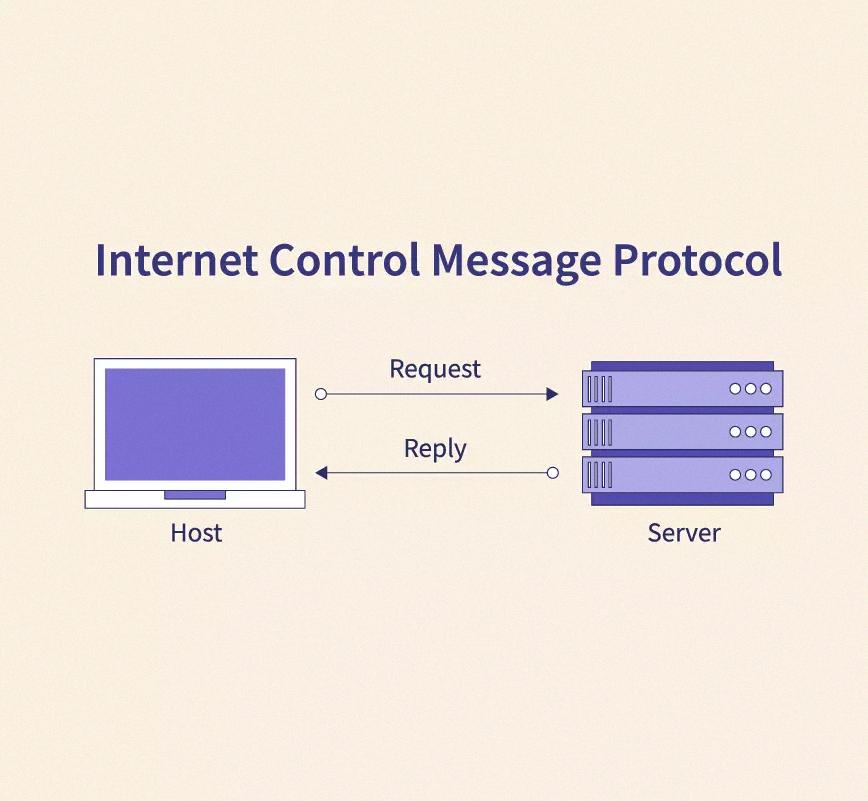
Source: scaler.com
Does ICMP Run Over IP?
Yes, ICMP (Internet Control Message Protocol) runs over IP (Internet Protocol). ICMP is a network-layer protocol in the Internet Protocol Suite that provides error and control messages for IP networks. It is used by network devices, such as routers, to communicate with each other and send error messages when there are issues with data transmission. Specifically, ICMP works in conjunction with IP to further process errors received from underlying layers or to report information about a connection or route. All ICMP messages are encapsulated within an IP packet, which contains the source and destination addresses of the sender and receiver.
Do DDoS Attacks Utilize ICMP?
Yes, DDoS attacks can use ICMP. ICMP is a type of protocol used to send messages and errors between computers on the Internet. In a DDoS attack, an attacker will send large numbers of malicious ICMP packets to a targeted device or network in an attempt to overwhelm it with traffic and cause it to become unavailable for legitimate users. These types of attacks are known as ICMP floods or Ping floods, and they can be used to launch large-scale DDoS campaigns that are difficult to defend against.
Conclusion
In conclusion, ICMP is an important protocol used by devices to communicate with the source of a data packet. It is responsible for sending messages to report network conditions, and it is also used by the Ping utility which is a tool that system administrators use to see if a computer is operating and if network connections are intact. Though ICMP can be filtered out, it is still necessary for the proper operation of IP, TCP, and other protocols.



